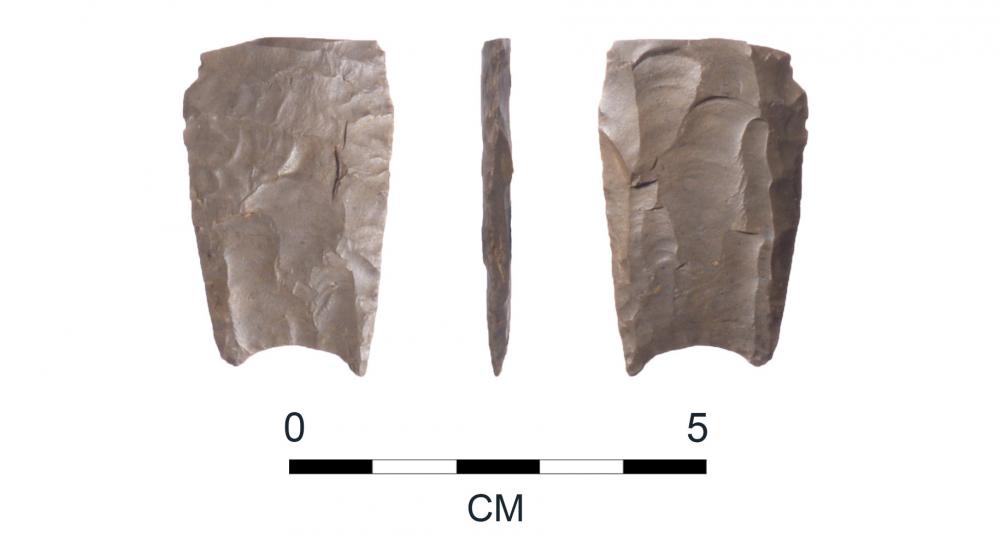Located in the middle reach of the Hudson River, Magdalene Island (Dutchess County, NY) has long been known to archaeologists as a location visited by ancient indigenous peoples. Until now, stone tools and other artifacts curated at the NYSM suggested the site was first occupied about 6,000 years ago. Shell middens (accumulations of oyster shell) found at the site testify to indigenous harvesting of oysters and perhaps other riverine fauna beginning with those earliest occupations.
However, a recent donation from the family of Mr. Howard Bonney of a distinctive artifact that he found at Magdalen Island years ago has shed new light on the timing of the area's occupation. This fluted point, marked by multiple channel flakes on both faces and its distinctive morphology, qualifies as the Crowfield fluted point type (http://oaslondonchapter.ca/crowfield-fluted/), believed to date to roughly 12,000-11,500 calendar years ago. Flaked from chert, this stone point would have been hafted on a weapons shaft and pushes back the earliest use of Magdalen Island by indigenous peoples to the late Ice Age.
Pictured above: Although missing its tip (perhaps broken in use), Howard Banney's fluted point from Magdalen Island displays multiple channel scars extending up from a concave base and an extremely thin cross-section (3.8 mm), qualifying it as the Crowfield point type from the late Ice Age.




